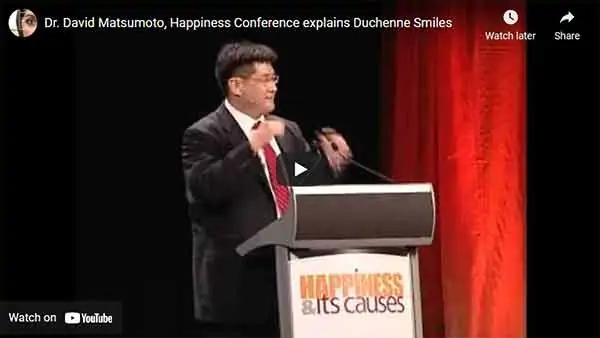We’re an affiliate: We hope you love our articles and the products we recommend! Just so you know, when you buy through links on this site, we may earn an affiliate commission. Thank you if you use our links, we really appreciate it!
You’ve probably heard the saying, “the eyes are a window into the soul”, well it turns out there’s a lot of truth in it. We communicate with our eyes just as much as with any other type of body language. If you want to be liked by your viewers, you must understand the small things you need to do to improve your video presentation skills.
The best tips for being good on camera are to genuinely smile at the viewer, make eye contact with them through the camera lens, and to frame your Talking Head videos as medium close-ups and/or close-ups. These three tips for being liked by viewers will make you more engaging and win you more followers.
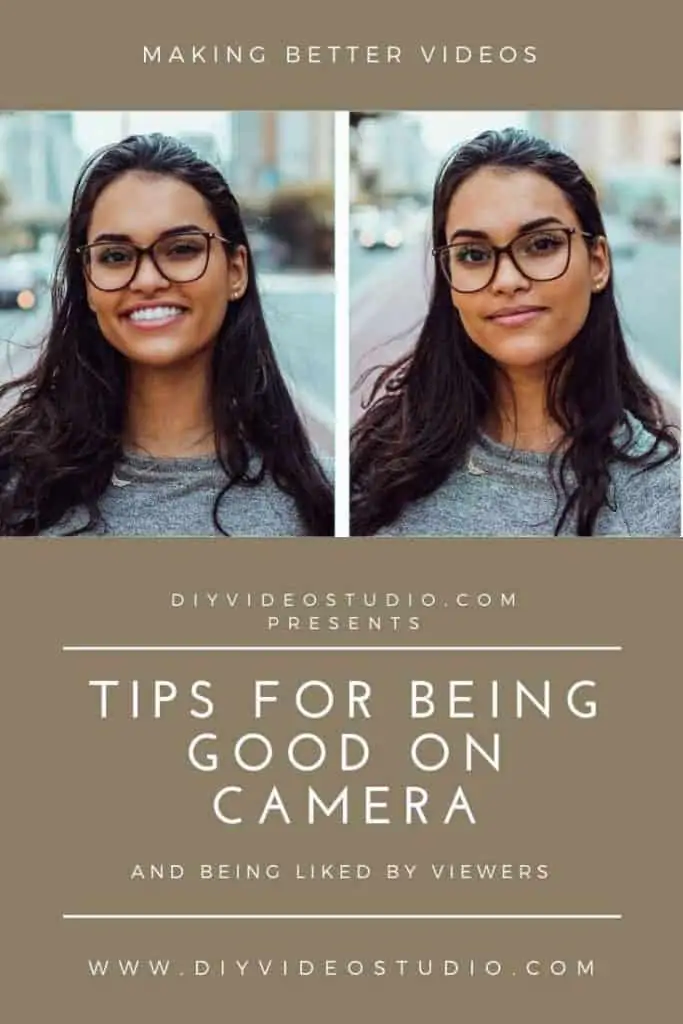
What I’m talking about is an important part of the jigsaw puzzle of appearing good on camera. They will help keep your viewers watching, liking you, and trusting you.
Being good on camera starts with your eyes.
Smile to relax and improve your likeability
I know this sounds odd, but if you smile whilst presenting your video, you’re giving your viewer an unconscious signal that you like them. It sounds crazy because the viewer knows it’s just a video recording, but the unconscious mind works in weird and wonderful ways.
What’s even more amazing is that if you give the impression that you like the viewer, they are more likely to like you back.
They know it’s just a recording but that’s the rational day-to-day problem-solving part of your brain understanding that. Your unconscious mind influences your actions to a much greater extent than you might think.
Just think about a YouTube video you’ve watched where the speaker smiled a lot. I bet you felt more positive towards them and even liked them.
To demonstrate the effect of smiling in your video presentation look at the two images below. The images are of the same woman and taken just a few moments apart, but which one draws you in more? I bet it’s the picture on the left where she’s smiling. But what’s interesting, is how the two images make you feel. When you look at the woman smiling you feel good, the emotion behind the smile is infectious. I’ll say more about that later when I mention Ron Gutman’s.
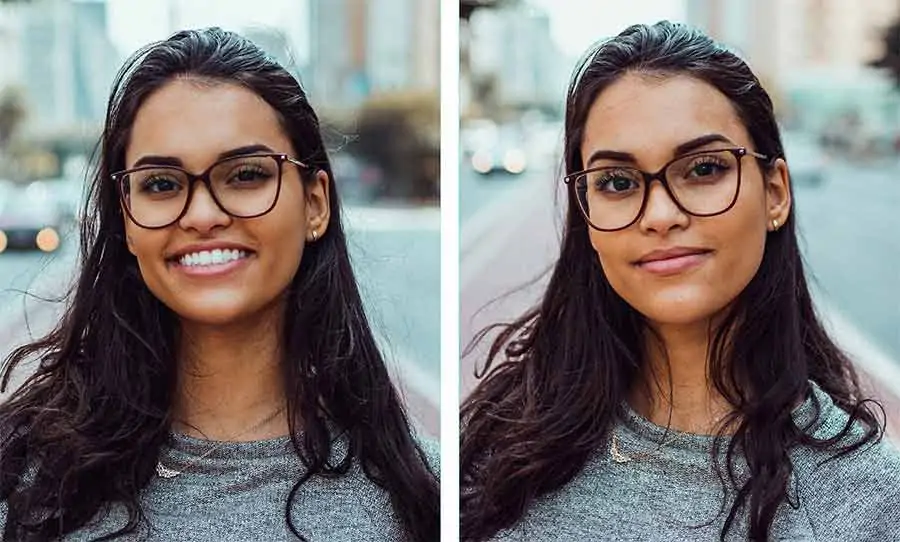
Robert Cialdini, author of the bestselling book Influence: Science and Practice, says liking is one of the 6 Principles of Persuasion. And that liking is one of the factors that cause someone to say “yes” to another’s request.
If you’re trying to get your viewer to do something for you, you’ll be much more successful if they like you. And they’re more likely to do that if you show you care and respect them. Your request doesn’t have to be a big pitch for a sale. It could be a request to get them to like your video, to subscribe to your channel, or leave a comment.
So having a genuine smile on your face right at the start of your video is going to move your viewer a little closer to liking you before you’ve even started speaking.
If you keep that genuine smile on your face while presenting your video reinforces that sense of liking and it transmits another signal to them. When someone is talking about an idea or service and they are smiling we often interpret that smile as enthusiasm.
We like people who are enthusiastic about something and we can get caught up in that enthusiasm.
Eventually, that unconscious liking on the part of the viewer will move toward trust. In other words, they are moving towards agreeing to your request, be it hitting the subscribe button or signing up for your online course.
So, if your aim is to bring someone round to your way of thinking, smile genuinely and be interested in your viewer’s problem or desire.
But there’s a problem. There are two types of smile, the true or Duchenne smile, and the fake smile.
The Duchenne smile
The Duchenne smile causes the corners of the mouth to be pulled back and raised, along with the cheeks, which may appear puffed up. This creates smile lines around and under the eyes, the so-called crow’s feet pattern. The eyes may also appear to have a “twinkle” in them.
If viewers can see your eyes clearly, they can tell whether your smile is real and reflects your real feelings and emotional state.
The Duchenne smile tells the viewer whether you believe what you are talking about or whether you are faking it and being disingenuous.
The non-Duchenne or fake smile
When people try to fake a smile, the movement around their eyes is often missing. This is the non-Duchenne smile.
If you want to hear Dr. David Matsumoto quickly explain the Duchenne smile watch this video. He also has a little fun with a Duchenne smile test to let you check your emotional intelligence.
A smile helps you and your viewer feel good
Smiles can also help you relax. Because smiles are infectious, they can transfer over to your viewer. And as Ron Gutman explains in his TED 2011 talk, “The Hidden Power of Smiling”, smiling can have physical effects on you, like lowering your blood pressure and feeling good.
In his Ted 2011 Talk Ron Gutman and mentioned a study at Penn State University. It found that when you smile it makes you look good in the eyes of others.
They perceive you as being more likable, courteous, and competent. When you smile, you look as if you’re feeling good about yourself. When your viewer sees you smiling, they will unconsciously mimic your smile, making them also feel good about themselves. So, your smiling makes your viewer feel good.
In other words, smiling helps to reinforce the sense that you are speaking with authority, so your viewer is more likely to trust what you are saying.
Who would have thought that adding a simple smile to your presentation technique could be so powerful?
A smile can change the way you sound
Obviously, a smile on your face helps to make you appear more open, genuine, and friendly. But it can also change the way you sound.
Try reading something with a non-smiling face and then repeat while smiling. The change in the shape of your mouth will influence the way you sound.
The difference may be small, but it is enough for people to notice and make you sound “warmer” and more friendly.
So appearing and sound friendly is a winning combination when you want to appear to be more likable on camera.
Make eye contact to make a connection with your viewer
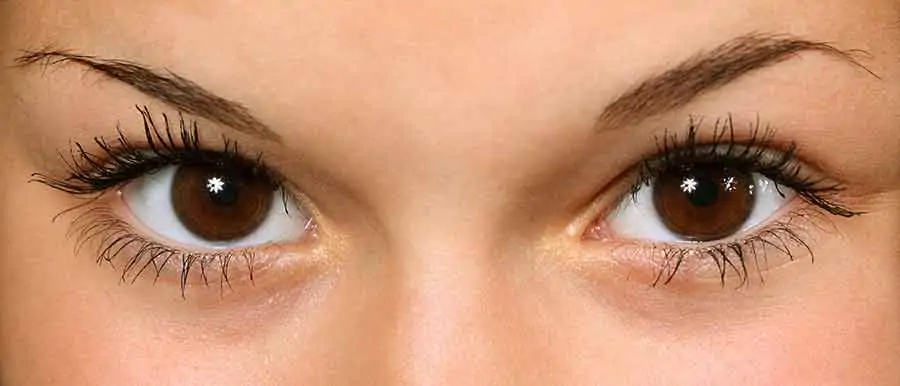
The second tip for being good on camera is to make and maintain eye contact with your viewer. Eye contact is also a key factor when you want to influence someone.
So how do you make eye contact with your viewer in a video?
Look into the lens of the camera, that’s where the viewer is. Direct eye-contact gives the viewer a sense of openness and sharing from you. But do not overplay the eye-contact card. Don’t let it become an uncomfortable stare that will feel like you are trying to intimidate the viewer.
Maintaining intense eye contact can also reveal to the viewer that you are trying to mislead them. So, although making and keeping eye contact with your viewer is important, keep it natural and don’t make it intense.
Here’s why you should maintain eye-contact in a video.
According to Allergan’s “A Look at Eye Language” online survey, “Eye language is a powerful form of communication that can reveal a lot about us”.
Their results showed that many Americans feel that eye behavior creates a shared connection. Whereas more than half of respondents said they felt respected if direct eye contact is held. A little under half said they felt understood and appreciated.
About a third mentioned that eye behavior increases likeability and leaves a good impression. Plus, a little under half of Americans said it showed sincerity.
So, eye contact helps your viewer feel connected and respected. Not only that, but they also feel that you are being sincere and genuine. All those factors boil down to your viewers’ feeling that you like them and can be trusted, even though their brains are telling them you haven’t even met.
Frame the shot to maximize the emotion
Your eyes and your facial features around the eyes can give an insight into your true feelings and emotional state. But that’s not all. The clearer your face the more easily your viewers will pick-up on those true emotions.
Does that mean you should record all your videos as wide shots where your viewers can’t see your facial details? Heck no. In fact, the opposite is true. But that’s assuming you are not trying to deceive your audience.
The correct framing of your video is the third factor to consider when you want to get more YouTube viewers.
When engaging with your viewer and trying to get them to move over to your way of thinking, let them see your eyes. But again, it’s about subtlety.

Use medium close-up and close-up shots in your video.
However, be aware that the emotional intensity of the shot increases as you get closer in.
By the time you get really close in with the Extreme Close-Up (ECU), the emotional intensity is, as the shot name, extremely high.
You can see in the image below that the ECU should only be used occasionally or to emphasize a point. It’s not a shot you want to persist with for more than a few seconds.
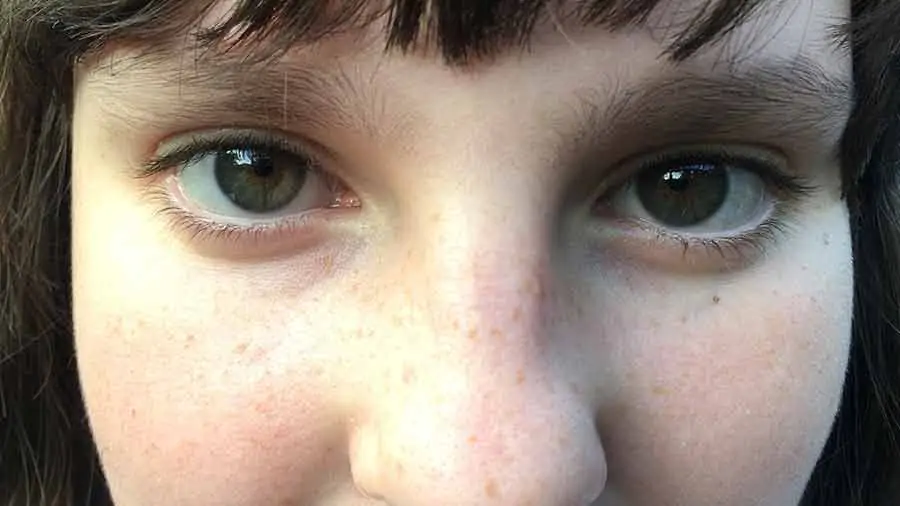
We’ve all heard that shifty characters try to avoid eye contact when lying. So make sure look the viewer square on. Show them that you can be trusted and that they matter to you. Plus of course, remember to smile. But make it a big Duchenne smile.
The viewer will like and trust you a whole lot more if they feel they are important to you.
Conclusion: it’s over to you
Now you understand a little better these tips for being good on camera and how they can help make your viewers like you, smile, make eye contact, and reveal your emotional interest in your viewers.
Assuming you are talking about something that matters to you, the non-verbal communication of your eyes, features, and body language will help the viewer understand and trust you.
According to research done by Buffer, talking-head videos out-performed text-only videos on Instagram, in terms of average video completions.
Also, don’t worry unduly about not being an actor.
In fact, that’s a crucial point. An actor, or at least the kind you can afford to hire, will produce a competent and polished performance, but not with the same unconscious body language and emotions that will come naturally to you.
That’s why appearing on video is going to be more persuasive than just using photographs, text, and graphics. Seeing your face will help build an emotional connection with your viewer and should be the basis of how to get more viewers and subscribers on YouTube.
Related Questions…
How do you look directly on a camera?
When presenting your own video, you should look straight at the camera lens. Do not be tempted to look at yourself on the screen and don’t look around the room. Both these actions tell the viewer that you aren’t focusing on them and that you feel uncomfortable in front of the camera. This in turn makes the viewer feel uncomfortable watching you.
How do I become camera friendly?
Make sure you prepare and practice in advance. If you have a script ensure you read it out loud a few times. If you are working without a script at least have a plan. Know what points you want to cover and the order in which they’ll come. Never try to wing it! Don’t feel you need to keep speaking, it’s OK to pause. Finally, relax. Any small mistakes you make probably won’t be noticed by your audience.
What should you not wear on a camera?
Extremes of all white or all black are poor choices for clothing in videos. Both black and white can cause exposure problems. With white backgrounds being popular, especially in business videos shot against a white office wall, wearing white can lead to your body disappearing into the background. If you are filming against a blue or green screen don’t wear anything of the same color.
Tosh Lubek runs an audio and video production business in the UK and has been using the Canon EOS R since it was released in the Autumn of 2018. He has used the camera to shoot TV commercials for Sky TV, promotional business videos, videos of events and functions, and YouTube creator content. He has also won international awards for his advertising and promotional work. You can meet by visiting his “video booth” at HashTag business events across the country.
Recent Posts
You're Using the Canon RF 50mm f/1.8 WRONG! Here’s How to Fix It
If you’ve recently picked up the Canon RF 50mm f/1.8 STM—affectionately known as the Nifty Fifty—you might be confused by that strange switch on the side of the lens. It doesn’t say AF/MF...
Recently, I shot several customer testimonial videos in 4K for a client when the overheating warning on my Canon EOS R6 appeared. In fact, it appeared three times in five sessions during the day of...



